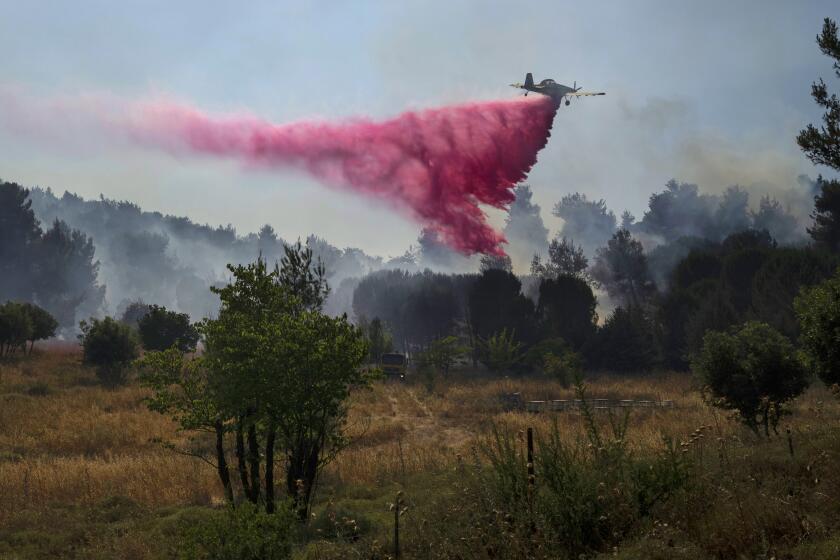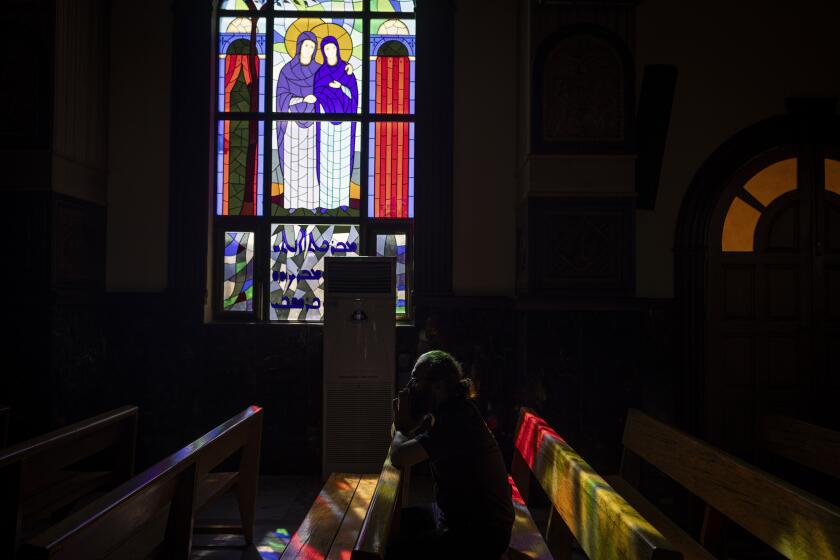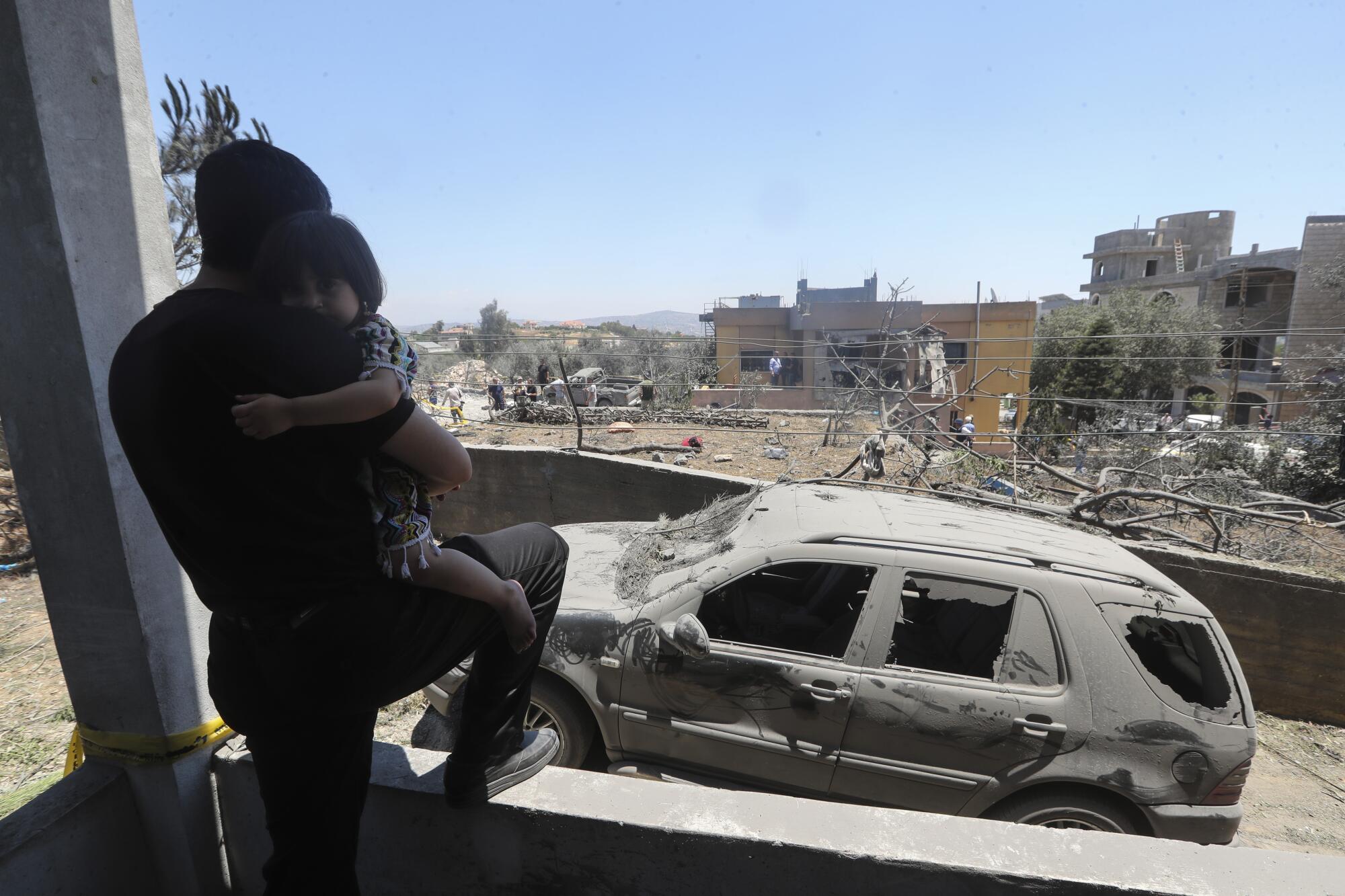
BEIRUT — The first assassination took two tries. An Israeli drone fired a missile that hit a Renault van in southern Lebanon. When the target, a Hezbollah operative, climbed out and fled into a roadside thicket, a second missile finished the job.
That same morning, 60 miles to the northeast, another drone struck a Dodge pickup carrying a commander in Jamaah Al-Islamiyah, a Lebanese Sunni Islamist faction allied with Hamas and Hezbollah.
The third assassination took place that night, when a missile slammed into a three-story building in the town of Jmaijmeh, killing Ali Maatouq, a senior commander with Hezbollah’s elite Radwan force.
The three hits last week were part of a particularly violent day across southern Lebanon, where Hezbollah, the Shiite paramilitary faction and political party, has tussled with Israel for more than nine months. But they were also another salvo in a longer-running intelligence war.
The escalating war between Hezbollah and Israel — coupled with scorching heat — has sparked fires that are destroying forests and farmland.
Since Oct. 7 — when Hamas made its brutal attack on southern Israel and Hezbollah launched what it calls a “solidarity campaign” — Israel has picked off some two dozen Hezbollah commanders.
The circumstances around some of the assassinations hint at a major security breach.
In June, Israel killed Sami Taleb Abdullah, the 55-year-old head of Hezbollah’s southeastern district, bombing a building in which he and three other operatives were holding a secret meeting. Three weeks later, it felled Mohammad Nimeh Nasser, who commanded the southwestern division, as he was driving in the southern city of Tyre.
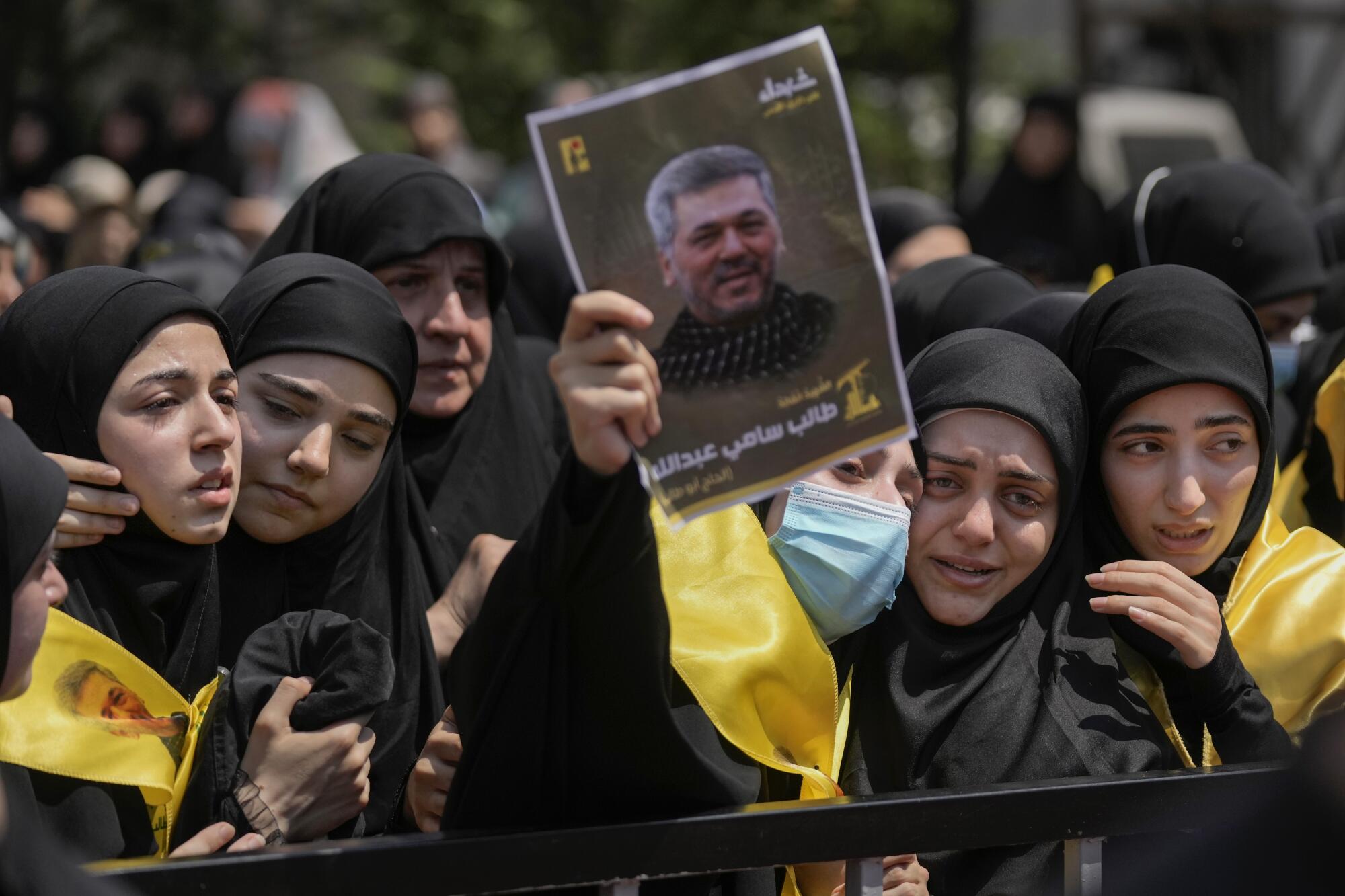
Paramount among the questions facing Hezbollah is how Israel managed to identify, track and kill top officers of the group, which has a reputation for high levels of operational security and discipline.
Using its technological edge in intelligence-gathering, Israel has long maintained a vigil over Hezbollah-dominated parts of the country, flying drones, intercepting phone calls and harvesting information on social media.
Israel under fire for ‘GPS spoofing’ affecting airplane navigation systems in Lebanon, Syria, Jordan, Egypt, Turkey and Cyprus.
In years past, it planted spying devices disguised as rocks or pieces of trash and tapped into the secure fiber-optic landline network that Hezbollah built across vast swaths of the country following a 2006 war with Israel.
“It’s logical the resistance will have losses because Israel has satellites, spying technologies and the cooperation of intelligence services from other countries,” said Gen. Mounir Shehadeh, who has served as the Lebanese government’s coordinator to the United Nations peacekeeping mission in Lebanon. The term “resistance” refers to a pro-Iranian network of governments and various factions — including Hezbollah — that are arrayed against Israel and the U.S.
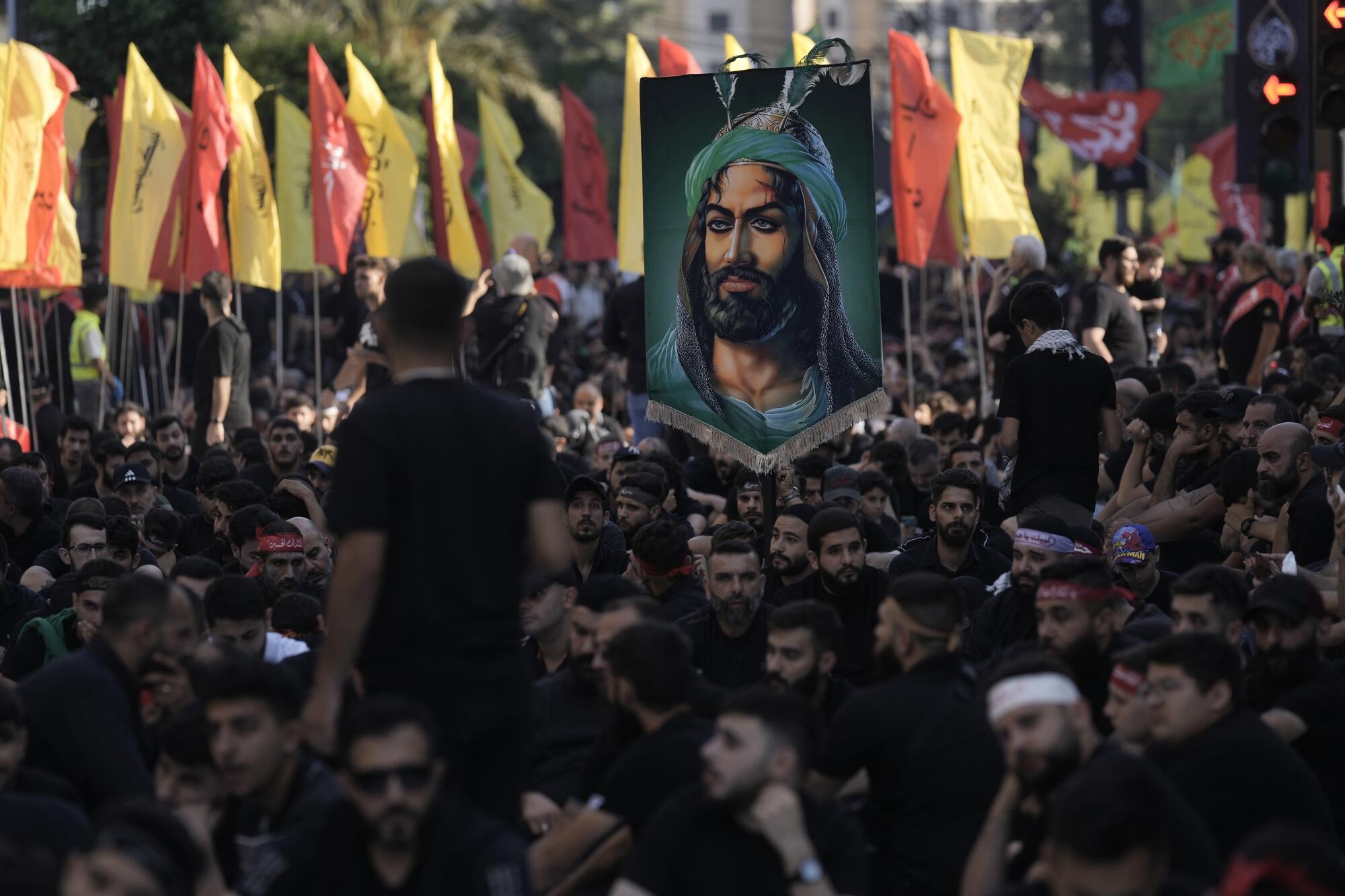
Shehadeh said that Israel has obtained landline and cellphone numbers that are not public and has been utilizing voice-print and facial-recognition technologies to track targets.
Still, Hezbollah has managed to reduce Israel’s success rate to what he described as “an acceptable level of losses,” he said.
In Hezbollah-dominated areas of the capital, the eastern Bekaa Valley and the country’s south, the group has told residents to turn off online connections with security cameras in front of their homes for fear they could be hacked. It broadcast instructions for people to refrain taking and posting photos with their smartphones. And for its own cadres and their families, it prohibited smartphone use entirely, ordering them instead to rely on pagers, couriers and coded messages through its landline network.
“Turn it off ... put it in a steel box and lock it in there for a week, two weeks, a month,” said Hezbollah General Secretary Sheikh Hassan Nasrallah in a speech in February. “God knows how long this situation will last.”
Christian areas scattered across Hezbollah-dominated southern Lebanon find themselves on the front line of a fight that few see as theirs.
Hezbollah has also enhanced the security of its landline network since a recent hack was blamed for at least two assassinations, according to a Lebanese security source who spoke on the condition of anonymity.
That Israel has managed to detect and kill cadres despite those countermeasures has raised suspicions of spies in Hezbollah’s midst.
With Lebanon’s economy since 2019 all but paralyzed by a years-long inflation crisis that wiped out much of people’s savings, it would not be difficult to recruit agents with financial incentives.
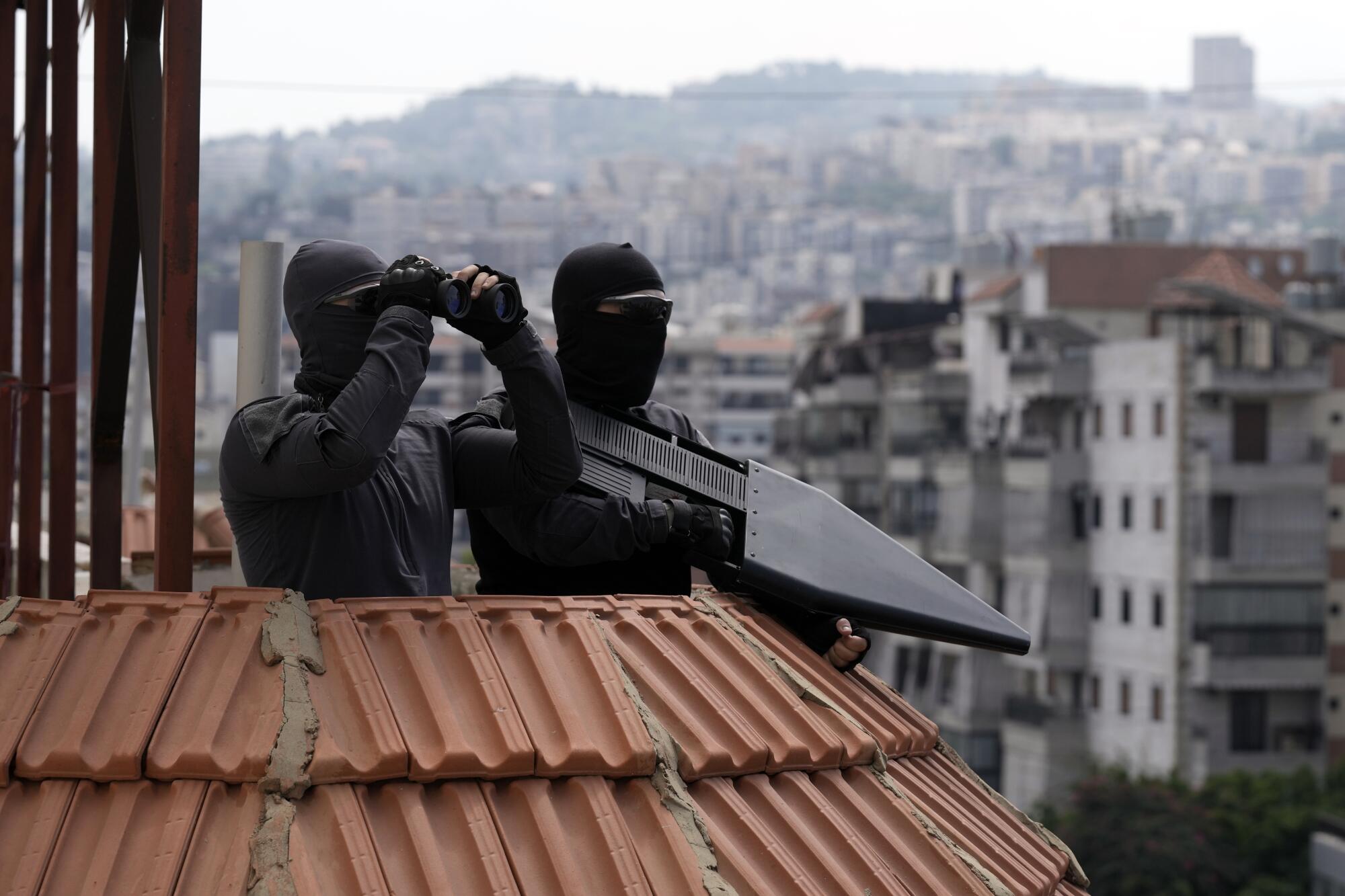
Lebanese authorities say they have made several arrests amid a spike in intelligence-gathering attempts.
Many of those who have been apprehended became ensnared when they responded to social media ads for jobs at a supposed real estate company and then agreed to photograph certain sites — initially nothing sensitive, but eventually more restricted areas such as the Dahieh, the Beirut suburb where Hezbollah is headquartered. One suspect was caught late last year conducting 3-D mapping of streets there along with radio spectrum monitoring on behalf of a foreign company that was thought to be an intelligence front.
Foreigners have also been embroiled. Last year, a Russian citizen was caught trying to escape the country after he was recorded on camera trying to break into a Hezbollah-owned building in the Dahieh.
Nevertheless, experts say Israel relies less on human intelligence than it does on electronic eavesdropping.
“The nature of the ongoing war is based on a huge information database Israel is exploiting in its operations,” said Ali Al-Amin, an analyst who is critical of Hezbollah.
He added that Hezbollah’s security is so tight that Israel would almost have to be getting its information from insiders.
At the same time, Hezbollah has notched up intelligence victories of its own. Over the last nine months, it has methodically attacked Israeli intelligence infrastructure along the border between the two countries, chipping away at Israel’s network of monitoring towers, listening devices and surveillance balloons with countless little attacks that have in turn degraded the defensive capabilities of the Iron Dome and other systems.
On Wednesday, Hezbollah released a nine-minute video that it says was shot this month from an Iranian-made drone that flew over Israel’s Ramat David air base, some 30 miles from the border. The video highlights a series of potential military targets — including rows of Apache and Panther helicopters, C-130 transport planes, repair depots and other logistics areas — and provide the name and a photograph of the base commander.
Israeli authorities downplayed the significance of the video, with an army spokesman writing on X that “the images published by Hezbollah were captured by an exclusively photographic drone. The activity of the air base was not affected.”
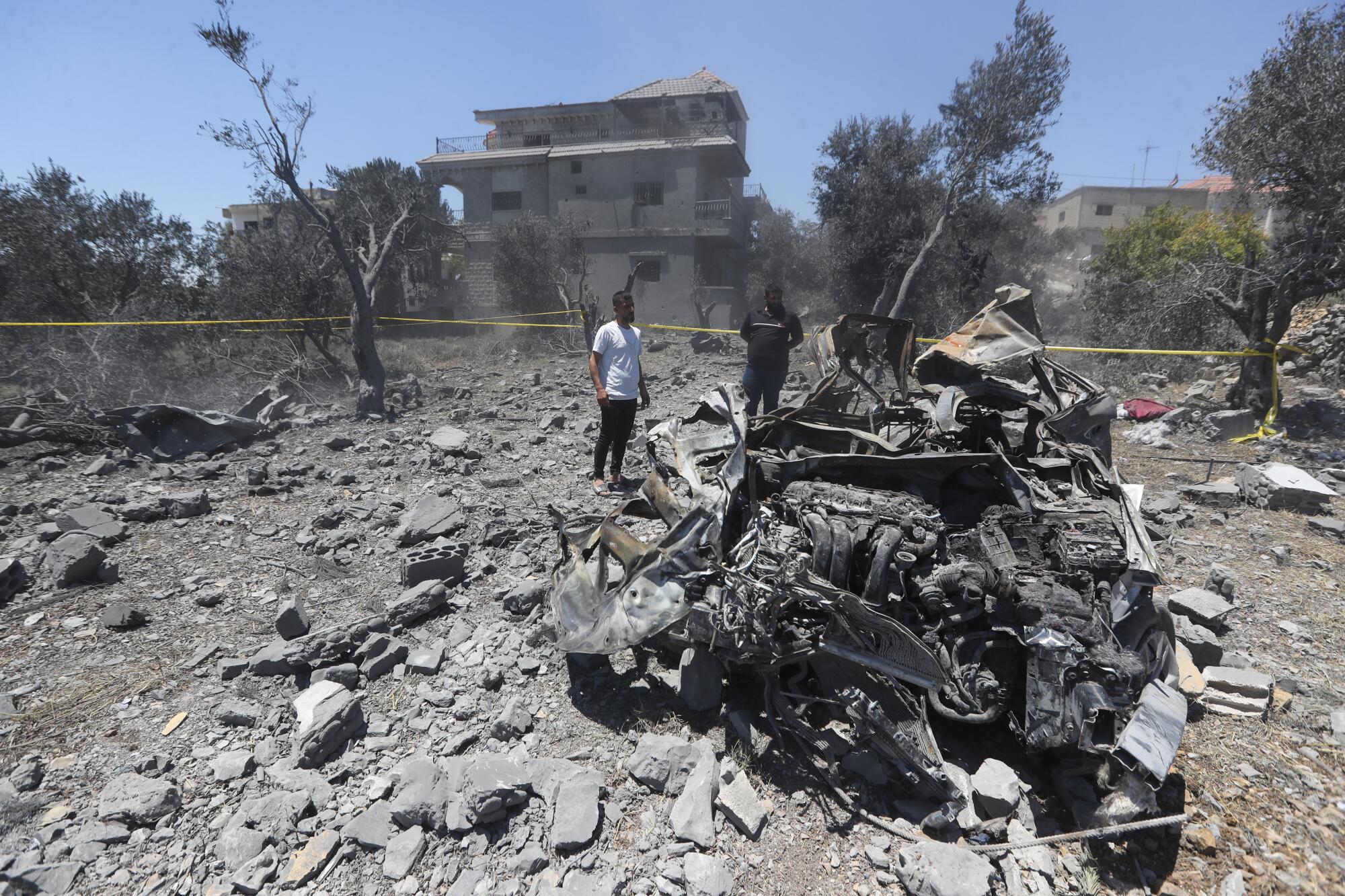
“The air force is working in every way to protect the skies over the State of Israel,” he wrote.
Since early October, when Hezbollah began launching attacks into northern Israel and Israel retaliated, nearly 400 Hezbollah members and more than 100 Lebanese civilians have died in the fighting. Some 90,000 people in Lebanon were forced to flee their homes. On the Israeli side, 21 soldiers and 13 civilians have been killed, and around 60,000 people have been displaced.
More to Read
Sign up for Essential California
The most important California stories and recommendations in your inbox every morning.
You may occasionally receive promotional content from the Los Angeles Times.
